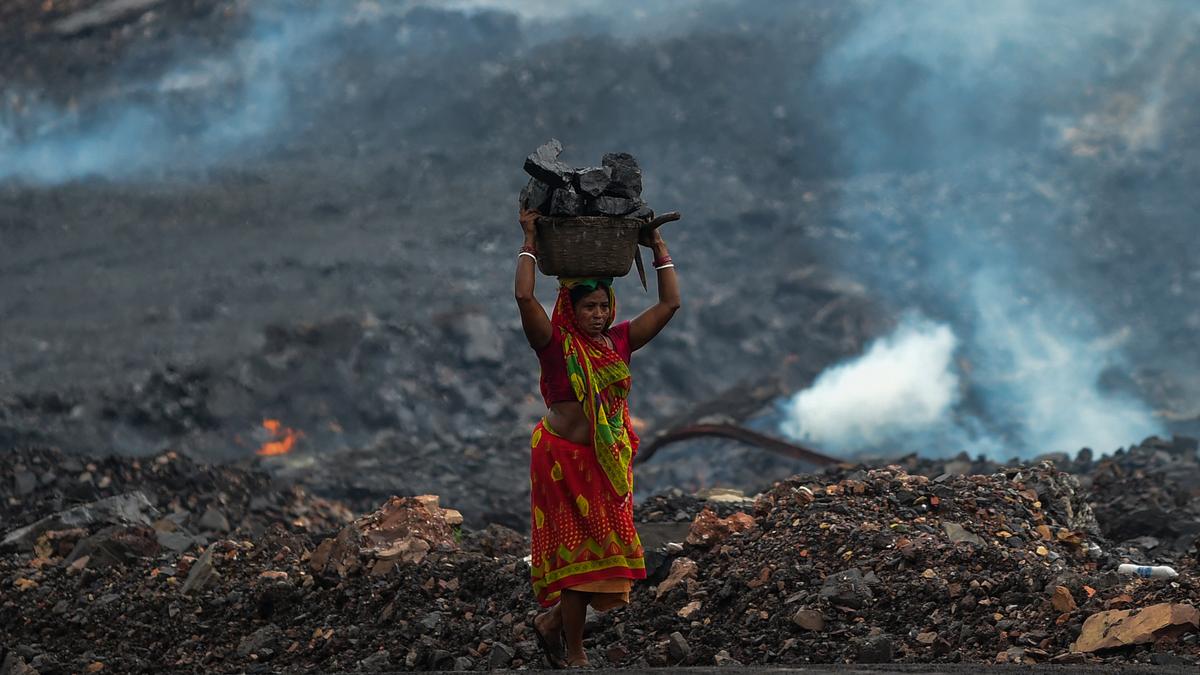Core sector activity slows to 2% as fossil fuels drift but steel & cement rise
Business EconomyPosted by AI on 2025-08-20 14:05:24 | Last Updated by AI on 2025-08-20 16:26:42
Share: Facebook | Twitter | Whatsapp | Linkedin Visits: 0

Core sector output slows to a trickle, with frail fossil fuels to blame. But steel and cement, the building blocks of a robust future, shine brightly in the July data. As the nation aims to develop its infrastructure, will these sectors be the backbone of a booming economy?
The Indian government's Ministry of Commerce and Industry recently released data for the Index of Eight Core Industries for July 2025. This data showed that the output had grown a mere 2% compared to the previous year. This was a significant decrease from the 6.3% growth seen in July 2024, highlighting the downward trajectory in the economy. The core sector, comprising 40.27% of the entire industrial output in India, serves as a crucial indicator of the country's economic performance.
The decrease was attributed to the significant slowdown in the production of fossil fuels, such as coal, crude oil, and natural gas. These industries experienced a meager 1.5% growth compared to the impressive 10.6% growth seen in July 2024. Conversely, steel and cement production witnessed an uptick, with robust growth of 8.4% and 6.4% respectively. These figures suggest a possible shift in focus for the Indian economy, away from fossil fuels towards more sustainable and structural sectors.
The government's focus on developing infrastructure and construction projects, as part of its economic agenda, could be fueling the growth in these core sectors. These industries are the backbone of any developing economy, providing the framework and foundation for progress.
With the recent spotlight on India's ambitious renewable energy targets and sustainable development goals, the future looks bright for steel and cement. Will these sectors be the driving force behind India's economic boom? Only time will tell.
Search
Categories
- Sports
- Business
- History
- Politics
- International
- Science & Technology
- Social Issues
- Disaster Management
- Current Affairs
- Education
- Startup Business
- Startup News
- Awards
- Community Services
- Fundraising Events
- Volunteer Services
- Health Initiatives
- Innovations and Initiatives
- In News
- dummybanners
- Awards
- Partners
- Products
- Press Releases
- News
- Fast Check
- South
- సినిమా
- Gallery
- Sunday Chronicle
- Hyderabad Chronicle
- లైఫ్ స్టైల్
- National
- క్రైం
- ట్రెండింగ్
- జాబ్స్
- అంతర్జాతీయo
- బిజినెస్
- రాజకీయం
- బిజినెస్
- సంపాదకీయం
- నవ్య
- చిత్ర జ్యోతి
- క్రీడలు
- జాతీయం
- తెలంగాణ
- తాజా వార్తలు
- మన పార్టీ
- మన నాయకత్వం
- మన విజయాలు
- డౌన్లోడ్స్
- మీడియా వనరులు
- కార్యకర్తలు
- North East Skill Center News
- Government Schemes
- Entrepreneurship Support
- Employment Opportunities
- Skill Training Programs
- Departments
- Investments
- Initiatives
- Resources
- Telangana IT Parks
- Events & Jobs
- Press Releases
- News
- Airport News
- Newtons Laws of Motion
- Karbonn in Business
- Investments in Karbonn
- Company quarterly sales
- Markets
- Auto News
- Industry
- Money
- Advertisements
- Stock target
- Company Updates
- Stock Market
- Company Sales
- Staffing and HR
- Constituency Assembly
- General News
- Srikalahasti Temple
- Bojjala Sudhir Reddy
- Technology & Innovation
- Sports
- Business
- Products
- Industries
- Services & Trainings
- Tools & Resources
- Technology Integration
- Drug Seizures & Arrests
- Telangana Narcotics
- Law & Enforcement
- Rehabilitation
- Nationwide Drug Policing
- Nigeria Seizures
- Global Operations
- Drug Awareness
- Drug Enforcement Tech
- NCB Drug Seizures
- Judicial Crackdown
- India's Surveillance Tools
- Cross-Border Links
- Women Safety
- Cyber Crimes
- Drug Abuse
- Traffic & Road Safety
- Community Connect
- Public Safety Alerts
- Citizen Assistance
- Nellore City News
- Politics & Administration
- Events & Festivals
- Agriculture & Rural
- Business & Economy
- Health & Wellness
Recent News
- Starvation, Harassment, and Exercise: Woman Reports Alleged Abuse by UP Man
- French Content Creator Raphael Graven Found Dead During Livestream
- MEA Rejects Dhaka's Charge On Awami Workers, Insists On Neighbouring Political Neutrality
- Bombay High Court Rules Against Jain Community's Request
- India Successfully Tests Agni 5 Ballistic Missile
- 'Free AI For All' Rajya Sabha Address Highlights Tech Divide, Calls for Accessibility
- Russia Offers Ukraine Security Guarantees 'On Equal Basis' With World Powers
- Trump's Former National Security Advisor Flynn Among Those Who Lost Gabbard's Swift Purge Of Security Clearances